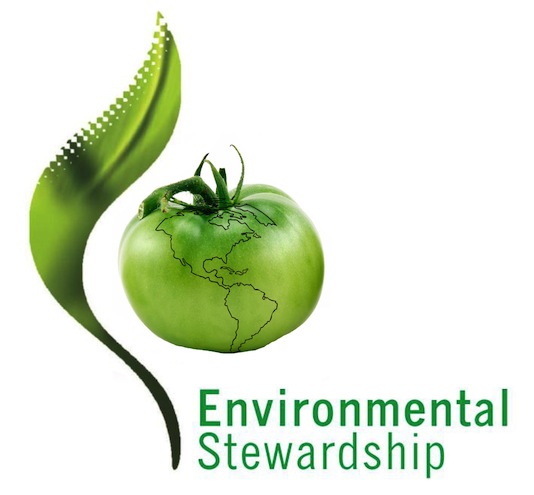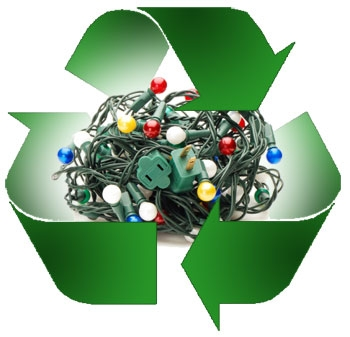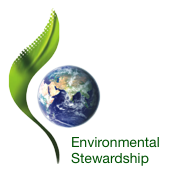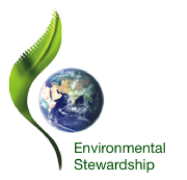October 6, 2013 - 10:58pm
If you are what you eat, then how is the earth related to what we grow
and what we consume?
 As Christians, we are all charged with the responsibility to care for our planet. This 2013-14 church year the Environmental Stewardship Work Area has chosen as its theme "The Green Tomato." Why did we choose this topic? We all wanted to better understand the interrelationships among how we eat and environmental stewardship. Perhaps there are things that we can do that will benefit both ourselves and the planet.
As Christians, we are all charged with the responsibility to care for our planet. This 2013-14 church year the Environmental Stewardship Work Area has chosen as its theme "The Green Tomato." Why did we choose this topic? We all wanted to better understand the interrelationships among how we eat and environmental stewardship. Perhaps there are things that we can do that will benefit both ourselves and the planet.
Specifically, as our overall population continues to live longer, we all are aware of the need to eat more healthily throughout our lives. We also are aware that we must be responsible care-takers of the Earth. We will be looking at the effect food production has on our Earth’s environment and the implications environmental stewardship has on how and what we eat. Some of the topics we will examine are:
-
the benefits of locally grown food/produce
-
how meat production and use impacts the environment
-
how herbs can be used with health and environmental benefits
-
the health aspects of food as it may pertain to Type II diabetes, valve replacements, cholesterol, plaque and cancer
-
the benefits of organic food for children, and what sustainability means with respect to food and the environment.
We hope you are also eager to find out more about "The Green Tomato." Bon appétit avec la responsabilité!

 Various local produce is alive and well and available during a large portion of the year here in Illinois. Most of the local produce that is available in one given month is typically available for a period of three to four months following. For example, local produce that is available in April is also available in May and June, and so forth. There are many advantages for purchasing local produce, such as: (a) Local produce tastes better (b) Local produce retains its nutrients longer (c) Local food preserves genetic diversity (d) Local farmers don’t have access to genetically modified seed (e) Local food provides support to local farm families (f) Local food builds community (g) Local food preserves open farm space (h) Our taxes are kept in check, since farms contribute more in taxes than they require in services (i) Local food supports a clean environment and benefits wildlife (j) Buying local food today ensures that there will be community farms tomorrow.
Various local produce is alive and well and available during a large portion of the year here in Illinois. Most of the local produce that is available in one given month is typically available for a period of three to four months following. For example, local produce that is available in April is also available in May and June, and so forth. There are many advantages for purchasing local produce, such as: (a) Local produce tastes better (b) Local produce retains its nutrients longer (c) Local food preserves genetic diversity (d) Local farmers don’t have access to genetically modified seed (e) Local food provides support to local farm families (f) Local food builds community (g) Local food preserves open farm space (h) Our taxes are kept in check, since farms contribute more in taxes than they require in services (i) Local food supports a clean environment and benefits wildlife (j) Buying local food today ensures that there will be community farms tomorrow. For most of us I expect, our relationship to meat and its relationship to us was fairly elemental growing up in the Midwest. Farmers raised it, and we ate it. We weren’t likely to ask probing questions such as what the livestock ate, what the conditions were on the farms they inhabited, or how they were slaughtered. We certainly weren’t interested in the water, energy and other resources that were required to sustain these livestock. In fact, even with the publication of Rachel Carson’s Silent Spring in 1962, and the associated mounting pressure to develop a higher consciousness around the widespread application of toxic herbicides and insecticides such as DDT, most of us didn’t make – or maybe didn’t want to make – the systemic connection between poisoning the land and its creatures and poisoning ourselves.
For most of us I expect, our relationship to meat and its relationship to us was fairly elemental growing up in the Midwest. Farmers raised it, and we ate it. We weren’t likely to ask probing questions such as what the livestock ate, what the conditions were on the farms they inhabited, or how they were slaughtered. We certainly weren’t interested in the water, energy and other resources that were required to sustain these livestock. In fact, even with the publication of Rachel Carson’s Silent Spring in 1962, and the associated mounting pressure to develop a higher consciousness around the widespread application of toxic herbicides and insecticides such as DDT, most of us didn’t make – or maybe didn’t want to make – the systemic connection between poisoning the land and its creatures and poisoning ourselves. Don't throw away your tangled, frayed or burned-out Christmas lights this year! This holiday season, the Village of Downers Grove is offering recycling of Christmas tree lights and extension cords.
Don't throw away your tangled, frayed or burned-out Christmas lights this year! This holiday season, the Village of Downers Grove is offering recycling of Christmas tree lights and extension cords. Timmy (The name means one who honors God) traces his genealogy back to the Andes Mountains of Peru, South America. Timmy’s ancestors’ last name was originally Tomatl, which meant round and plump to the Aztecs. In the 16th Century, Spanish conquistadores took the tomatoes back to Europe with them. In the 18th Century, tomatoes were brought to Quebec and Louisiana by the French. Now the tomato is the most widely grown fruit (Yes, technically Timmy is a fruit.) in the Americas.
Timmy (The name means one who honors God) traces his genealogy back to the Andes Mountains of Peru, South America. Timmy’s ancestors’ last name was originally Tomatl, which meant round and plump to the Aztecs. In the 16th Century, Spanish conquistadores took the tomatoes back to Europe with them. In the 18th Century, tomatoes were brought to Quebec and Louisiana by the French. Now the tomato is the most widely grown fruit (Yes, technically Timmy is a fruit.) in the Americas. As Christians, we are all charged with the responsibility to care for our planet. This 2013-14 church year the Environmental Stewardship Work Area has chosen as its theme "The Green Tomato." Why did we choose this topic? We all wanted to better understand the interrelationships among how we eat and environmental stewardship. Perhaps there are things that we can do that will benefit both ourselves and the planet.
As Christians, we are all charged with the responsibility to care for our planet. This 2013-14 church year the Environmental Stewardship Work Area has chosen as its theme "The Green Tomato." Why did we choose this topic? We all wanted to better understand the interrelationships among how we eat and environmental stewardship. Perhaps there are things that we can do that will benefit both ourselves and the planet.  Check out this informative video:
Check out this informative video:



